How to Enhance Category Management with Drawing Data
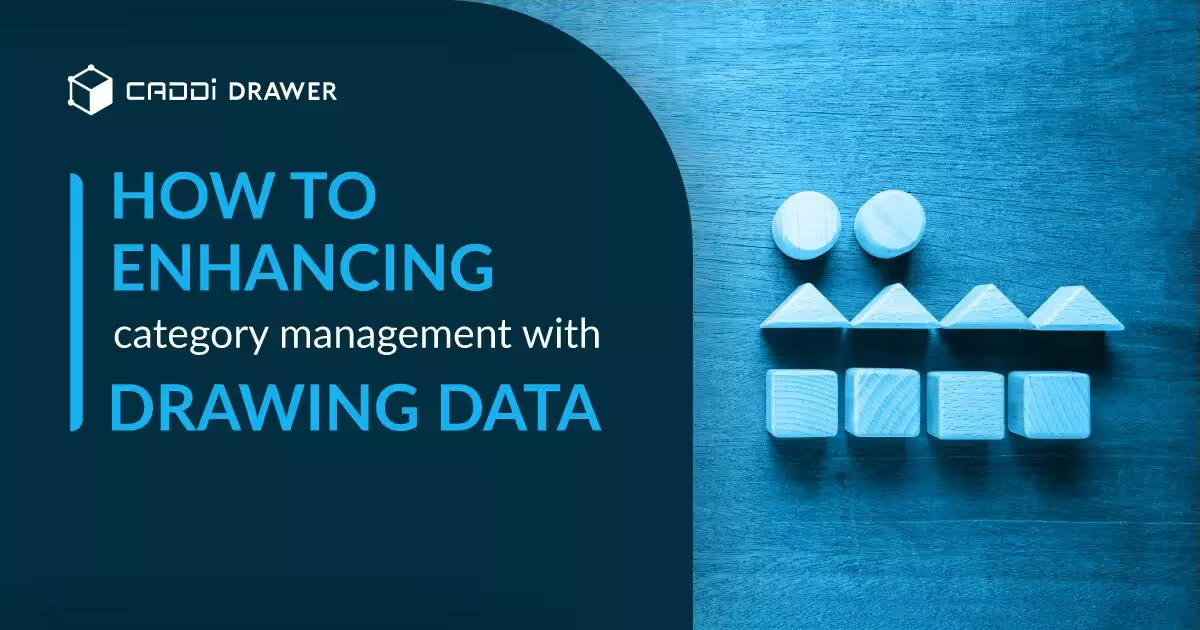
Table of Contents

Leveraging information from engineering drawings
For procurement teams at manufacturing companies, effectively managing categories of products and components is critical to optimizing costs, quality, and supply. Category management involves strategically segmenting the company’s spend into distinct groups of similar items, and developing tailored procurement strategies for each category based on internal requirements and supply market dynamics.
A key input that can significantly enhance category management for manufacturers is data extracted from engineering drawings. These technical documents, created by product designers and engineers, provide detailed specifications, dimensions, tolerances, materials, and other characteristics for the vast array of components that go into the company’s products.
By leveraging information from engineering drawings, procurement category managers can gain deep insights into the form, fit and function of the items they are sourcing. This equips them to make more informed decisions to rationalize SKUs, identify optimal suppliers, negotiate better terms, and ensure supply of quality parts that meet precise engineering standards.
Let us showcase some specific ways procurement teams can utilize engineering drawing data in their category management processes.
1. Spend Analysis and Categorization
The foundation of category management is analyzing procurement spend data to segment purchases into logical categories and sub-categories. Traditionally, this has been done based on supplier information and high-level product descriptions.
However, by extracting more granular technical data from engineering drawings such as materials, grades, dimensions, tolerances, surface treatments, etc., a much richer spend analysis can be performed. Using techniques like attribute-based classification, text mining, and image analysis, purchases can be grouped into categories that are tightly aligned with engineering requirements. This lays the groundwork for a range of category strategies.
For example, all machined components made of a certain grade of stainless steel, within defined dimensional ranges, and with particular surface finishes could be grouped into a category, with sub-categories for different tolerance levels. Such precise categorization enables targeted strategic sourcing, supplier management, and inventory optimization.
2. Standardization and Rationalization
With numerous engineers specifying parts across various product lines, it’s common for a proliferation of slight variations to occur in a manufacturer’s portfolio of purchased components. This lack of standardization leads to higher costs, quality issues, and supply risks.
By analyzing the technical parameters in engineering drawings across categories, procurement can identify opportunities to standardize and rationalize components. Minor differences in dimensions, tolerances or materials can often be eliminated to reduce complexity.
For instance, a manufacturer may be purchasing O-rings in hundreds of marginally different sizes from dozens of suppliers. By extracting and comparing dimensions from engineering drawings, category managers could determine that the vast majority of those sizes could be standardized into a much smaller set of common sizes. This would enable consolidation of spend with fewer strategic suppliers, while still meeting engineering needs.
The same principles can be applied to categories like fasteners, bearings, electronic components, and even machined and fabricated parts. Using meta-data from engineering drawings to “level-set” technical requirements with designers can yield major benefits. Procurement can help drive part number rationalization and engineering changes to optimize the supply base.
3. Early Supplier Involvement
Another way to apply insights from engineering drawings is to facilitate early supplier involvement in the product development process. By sharing component specifications from initial drawings with trusted suppliers, their expertise can be leveraged to optimize designs for manufacturability, cost, and quality.
For example, in a casting or forging category, suppliers could advise on slight modifications to draft angles, corner radii, and wall thicknesses that would improve yields and reduce tooling costs. For printed circuit board assemblies, suppliers may suggest alternate components that reduce lead times and costs while still meeting performance requirements.
Analyzing data from engineering drawings can help identify categories and components where early supplier engagement would add the most value. Procurement can then collaborate with engineering to select strategic suppliers and develop long-term relationships that go beyond transactional purchasing. Co-developing technical specifications that balance cost and value becomes a core category strategy.
4. Should-Cost Modeling
Engineering drawings contain a wealth of data that can inform should-cost models for purchased components and assemblies. Should-costing is a rigorous analysis of all the cost elements that go into producing an item, including materials, labor, overhead, and profit margins. The goal is to determine a fair target price to pay suppliers for a given part.
Traditionally, procurement teams have relied on historical prices, supplier quotes, and high-level cost breakdowns to estimate should-costs. However, this often leads to sub-optimal results, as critical cost drivers may be missed or suppliers may not fully disclose their actual costs.
By leveraging data from engineering drawings, much more accurate should-cost models can be constructed. Dimensional data can be used to precisely estimate material volumes and weights. Tolerances and surface specifications provide insights into machining cycle times, labor, and equipment costs. Features like threads and holes can be mapped to standard time estimates for those operations.
This detailed technical data can be fed into should-cost tools and models, along with labor rates, equipment/tooling costs, and overhead factors, to calculate comprehensive should-costs. Category managers can then use these should-cost targets to negotiate more effectively with suppliers, pushing for continuous cost improvement.
In categories like castings, forgings, machined parts, and fabricated components, engineering drawing data is invaluable for should-costing. The key is using the right cost modeling tools and databases to efficiently translate technical specifications into credible should-cost estimates aligned with manufacturing realities.
5. Supplier Technical Evaluation
When selecting and managing suppliers for critical categories, procurement teams must look beyond just cost and delivery to assess technical capabilities. Suppliers’ ability to consistently produce parts that meet engineering specifications is vital, as deviations can lead to quality issues, warranty claims, and production disruptions.
Engineering drawing data provides a framework for objectively evaluating suppliers’ technical competencies. By extracting key parameters like tolerances, surface finishes, and material properties from component drawings, category managers can develop supplier scoring models that are tailored to specific engineering requirements.
For example, in a precision machining category, suppliers can be assessed on their ability to hold tight tolerances, achieve specified surface roughness levels, and maintain critical dimensions over high volumes. Capability data from initial sample inspections, first article approvals, and ongoing quality metrics can be mapped back to drawing specifications to rate suppliers.
Similar drawing-based supplier scorecards can be developed for other technical categories like injection molded plastics, die castings, stamped metal parts, and welded fabrications. This helps category managers make data-driven decisions on supplier selection, development, and ongoing performance management.
6. Inventory Optimization
Effective inventory management is critical in industrial manufacturing, where holding excess inventory ties up working capital, while stockouts can shut down production lines. Category managers are tasked with optimizing inventory levels and replenishment strategies to balance supply and demand.
Engineering drawing data can provide valuable inputs for inventory optimization models. By analyzing technical attributes like dimensions, materials, and lead times across a category, procurement can segment parts into groups with similar inventory profiles.
For example, small, standard fasteners that are used across multiple products may be classified as high-volume, low-cost items that can be stocked in bulk with frequent replenishment from distributors. Conversely, large, custom-machined components with long lead times may require a more conservative inventory approach, with safety stock levels based on demand variability and supplier reliability.
Drawing tolerances and revision levels can also impact inventory strategies. Parts with tight tolerances may have higher scrap rates and require more buffer stock. Components that undergo frequent engineering changes may need to be managed carefully to avoid obsolescence.
By incorporating these technical factors from engineering drawings into inventory optimization tools and statistical models, category managers can make more informed stocking decisions. This data-driven approach helps reduce excess inventory while ensuring availability of critical parts.
7. Quality Management
Engineering drawings set the quality standards for purchased components. They specify the allowable variations in dimensions, materials, and performance characteristics that suppliers must meet.
Procurement teams can use this drawing data to enhance quality management processes across categories. By extracting critical quality parameters from drawings, they can develop more precise inspection plans and acceptance criteria for incoming parts.
For instance, a drawing may call out a specific surface hardness range for a gear. Procurement can ensure that the receiving inspection process includes hardness testing equipment and protocols to verify compliance. Similarly, if a drawing specifies a particular material composition or coating, procurement can work with quality teams to validate those requirements through material certifications or lab testing.
Drawing data can also inform supplier quality management. By monitoring supplier performance against drawing specifications, category managers can identify quality issues early and work with suppliers on corrective actions. This data-driven approach helps prevent quality escapes and reduces defect rates.
In categories like automotive, aerospace, and medical devices, where adherence to drawing specifications is critical for safety and regulatory compliance, leveraging drawing data in quality processes is especially important.
How CADDi Drawer can help category managers
Engineering drawings are a rich source of technical data that procurement teams can leverage to improve category management in industrial manufacturing. By extracting and analyzing information on dimensions, tolerances, materials, and other specifications, category managers can make more informed decisions across the sourcing lifecycle.
From spend analysis and supplier selection to should-costing and inventory optimization, engineering drawing data provides a foundation for fact-based category strategies. It allows procurement to collaborate more effectively with engineering and suppliers to drive standardization, cost savings, and quality improvements.
To fully harness the power of this data, procurement teams need the right tools and processes to efficiently extract, classify, and integrate drawing information into their category management workflows. This may require investments in data management systems, analytics capabilities, and cross-functional collaboration.
CADDi Drawer is one of the tools that enables category managers to fully leverage engineering drawing data for informed decision-making. The software automatically extracts detailed technical data from digital and scanned drawings, eliminating manual data entry and ensuring accuracy.
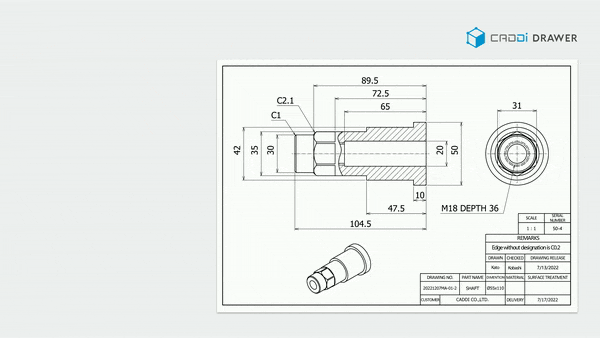
The extracted data is stored in a searchable database, allowing category managers to easily compare drawings based on specific attributes. This facilitates standardization, part number optimization, and volume purchasing opportunities. CADDi Drawer also enables collaboration between procurement and engineering teams by providing a single source of truth for drawing data.
Additionally, CADDi Drawer integrates drawing data with other business information, such as ERP systems and supplier databases. This allows category managers to analyze drawings in the context of cost, quality, and lead time factors. By combining drawing data with supplier performance metrics and cost data, procurement teams can identify the best suppliers and negotiate better prices.
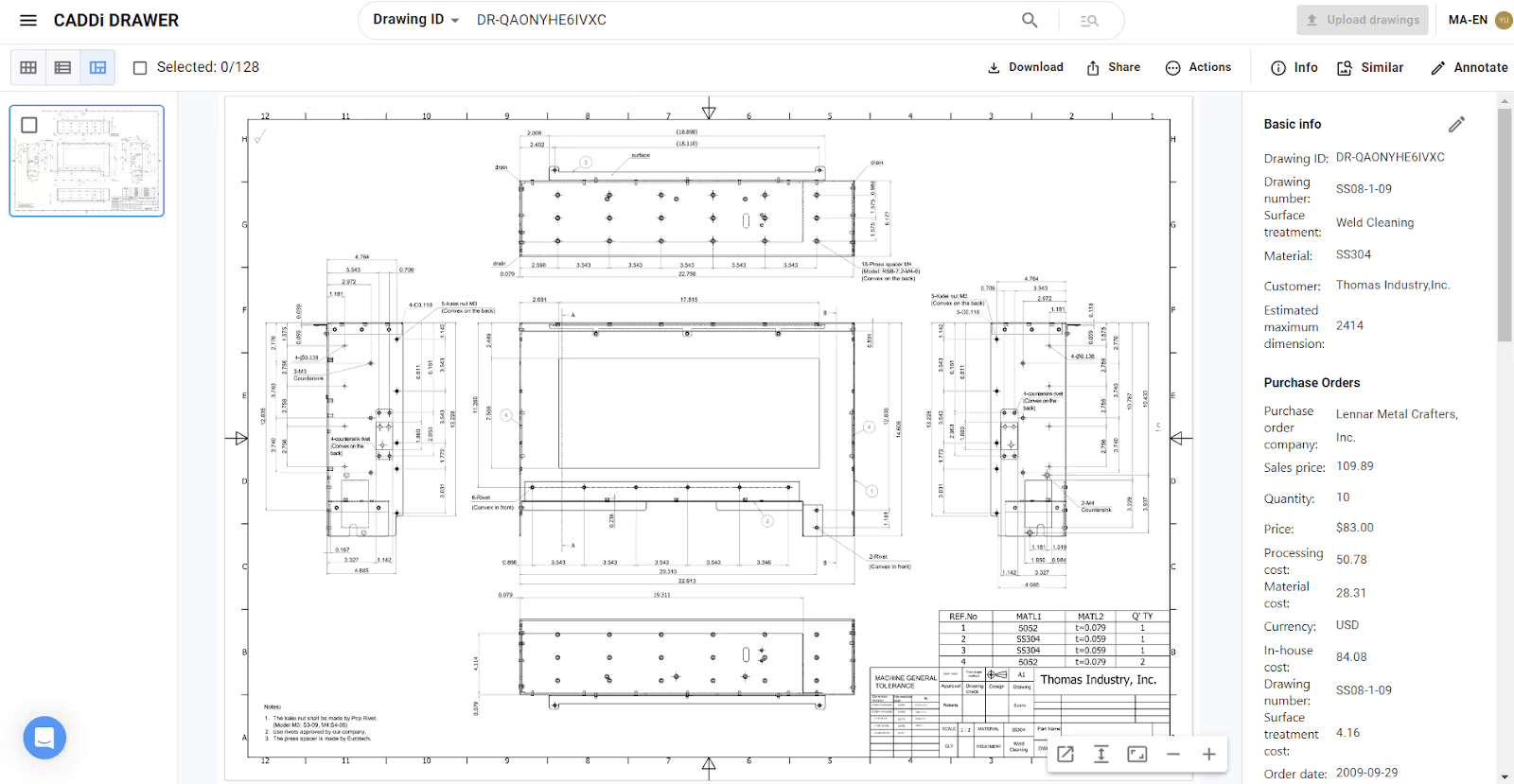
Leveraging information from engineering drawings
For procurement teams at manufacturing companies, effectively managing categories of products and components is critical to optimizing costs, quality, and supply. Category management involves strategically segmenting the company’s spend into distinct groups of similar items, and developing tailored procurement strategies for each category based on internal requirements and supply market dynamics.
A key input that can significantly enhance category management for manufacturers is data extracted from engineering drawings. These technical documents, created by product designers and engineers, provide detailed specifications, dimensions, tolerances, materials, and other characteristics for the vast array of components that go into the company’s products.
By leveraging information from engineering drawings, procurement category managers can gain deep insights into the form, fit and function of the items they are sourcing. This equips them to make more informed decisions to rationalize SKUs, identify optimal suppliers, negotiate better terms, and ensure supply of quality parts that meet precise engineering standards.
Let us showcase some specific ways procurement teams can utilize engineering drawing data in their category management processes.
1. Spend Analysis and Categorization
The foundation of category management is analyzing procurement spend data to segment purchases into logical categories and sub-categories. Traditionally, this has been done based on supplier information and high-level product descriptions.
However, by extracting more granular technical data from engineering drawings such as materials, grades, dimensions, tolerances, surface treatments, etc., a much richer spend analysis can be performed. Using techniques like attribute-based classification, text mining, and image analysis, purchases can be grouped into categories that are tightly aligned with engineering requirements. This lays the groundwork for a range of category strategies.
For example, all machined components made of a certain grade of stainless steel, within defined dimensional ranges, and with particular surface finishes could be grouped into a category, with sub-categories for different tolerance levels. Such precise categorization enables targeted strategic sourcing, supplier management, and inventory optimization.
2. Standardization and Rationalization
With numerous engineers specifying parts across various product lines, it’s common for a proliferation of slight variations to occur in a manufacturer’s portfolio of purchased components. This lack of standardization leads to higher costs, quality issues, and supply risks.
By analyzing the technical parameters in engineering drawings across categories, procurement can identify opportunities to standardize and rationalize components. Minor differences in dimensions, tolerances or materials can often be eliminated to reduce complexity.
For instance, a manufacturer may be purchasing O-rings in hundreds of marginally different sizes from dozens of suppliers. By extracting and comparing dimensions from engineering drawings, category managers could determine that the vast majority of those sizes could be standardized into a much smaller set of common sizes. This would enable consolidation of spend with fewer strategic suppliers, while still meeting engineering needs.
The same principles can be applied to categories like fasteners, bearings, electronic components, and even machined and fabricated parts. Using meta-data from engineering drawings to “level-set” technical requirements with designers can yield major benefits. Procurement can help drive part number rationalization and engineering changes to optimize the supply base.
3. Early Supplier Involvement
Another way to apply insights from engineering drawings is to facilitate early supplier involvement in the product development process. By sharing component specifications from initial drawings with trusted suppliers, their expertise can be leveraged to optimize designs for manufacturability, cost, and quality.
For example, in a casting or forging category, suppliers could advise on slight modifications to draft angles, corner radii, and wall thicknesses that would improve yields and reduce tooling costs. For printed circuit board assemblies, suppliers may suggest alternate components that reduce lead times and costs while still meeting performance requirements.
Analyzing data from engineering drawings can help identify categories and components where early supplier engagement would add the most value. Procurement can then collaborate with engineering to select strategic suppliers and develop long-term relationships that go beyond transactional purchasing. Co-developing technical specifications that balance cost and value becomes a core category strategy.
4. Should-Cost Modeling
Engineering drawings contain a wealth of data that can inform should-cost models for purchased components and assemblies. Should-costing is a rigorous analysis of all the cost elements that go into producing an item, including materials, labor, overhead, and profit margins. The goal is to determine a fair target price to pay suppliers for a given part.
Traditionally, procurement teams have relied on historical prices, supplier quotes, and high-level cost breakdowns to estimate should-costs. However, this often leads to sub-optimal results, as critical cost drivers may be missed or suppliers may not fully disclose their actual costs.
By leveraging data from engineering drawings, much more accurate should-cost models can be constructed. Dimensional data can be used to precisely estimate material volumes and weights. Tolerances and surface specifications provide insights into machining cycle times, labor, and equipment costs. Features like threads and holes can be mapped to standard time estimates for those operations.
This detailed technical data can be fed into should-cost tools and models, along with labor rates, equipment/tooling costs, and overhead factors, to calculate comprehensive should-costs. Category managers can then use these should-cost targets to negotiate more effectively with suppliers, pushing for continuous cost improvement.
In categories like castings, forgings, machined parts, and fabricated components, engineering drawing data is invaluable for should-costing. The key is using the right cost modeling tools and databases to efficiently translate technical specifications into credible should-cost estimates aligned with manufacturing realities.
5. Supplier Technical Evaluation
When selecting and managing suppliers for critical categories, procurement teams must look beyond just cost and delivery to assess technical capabilities. Suppliers’ ability to consistently produce parts that meet engineering specifications is vital, as deviations can lead to quality issues, warranty claims, and production disruptions.
Engineering drawing data provides a framework for objectively evaluating suppliers’ technical competencies. By extracting key parameters like tolerances, surface finishes, and material properties from component drawings, category managers can develop supplier scoring models that are tailored to specific engineering requirements.
For example, in a precision machining category, suppliers can be assessed on their ability to hold tight tolerances, achieve specified surface roughness levels, and maintain critical dimensions over high volumes. Capability data from initial sample inspections, first article approvals, and ongoing quality metrics can be mapped back to drawing specifications to rate suppliers.
Similar drawing-based supplier scorecards can be developed for other technical categories like injection molded plastics, die castings, stamped metal parts, and welded fabrications. This helps category managers make data-driven decisions on supplier selection, development, and ongoing performance management.
6. Inventory Optimization
Effective inventory management is critical in industrial manufacturing, where holding excess inventory ties up working capital, while stockouts can shut down production lines. Category managers are tasked with optimizing inventory levels and replenishment strategies to balance supply and demand.
Engineering drawing data can provide valuable inputs for inventory optimization models. By analyzing technical attributes like dimensions, materials, and lead times across a category, procurement can segment parts into groups with similar inventory profiles.
For example, small, standard fasteners that are used across multiple products may be classified as high-volume, low-cost items that can be stocked in bulk with frequent replenishment from distributors. Conversely, large, custom-machined components with long lead times may require a more conservative inventory approach, with safety stock levels based on demand variability and supplier reliability.
Drawing tolerances and revision levels can also impact inventory strategies. Parts with tight tolerances may have higher scrap rates and require more buffer stock. Components that undergo frequent engineering changes may need to be managed carefully to avoid obsolescence.
By incorporating these technical factors from engineering drawings into inventory optimization tools and statistical models, category managers can make more informed stocking decisions. This data-driven approach helps reduce excess inventory while ensuring availability of critical parts.
7. Quality Management
Engineering drawings set the quality standards for purchased components. They specify the allowable variations in dimensions, materials, and performance characteristics that suppliers must meet.
Procurement teams can use this drawing data to enhance quality management processes across categories. By extracting critical quality parameters from drawings, they can develop more precise inspection plans and acceptance criteria for incoming parts.
For instance, a drawing may call out a specific surface hardness range for a gear. Procurement can ensure that the receiving inspection process includes hardness testing equipment and protocols to verify compliance. Similarly, if a drawing specifies a particular material composition or coating, procurement can work with quality teams to validate those requirements through material certifications or lab testing.
Drawing data can also inform supplier quality management. By monitoring supplier performance against drawing specifications, category managers can identify quality issues early and work with suppliers on corrective actions. This data-driven approach helps prevent quality escapes and reduces defect rates.
In categories like automotive, aerospace, and medical devices, where adherence to drawing specifications is critical for safety and regulatory compliance, leveraging drawing data in quality processes is especially important.
How CADDi Drawer can help category managers
Engineering drawings are a rich source of technical data that procurement teams can leverage to improve category management in industrial manufacturing. By extracting and analyzing information on dimensions, tolerances, materials, and other specifications, category managers can make more informed decisions across the sourcing lifecycle.
From spend analysis and supplier selection to should-costing and inventory optimization, engineering drawing data provides a foundation for fact-based category strategies. It allows procurement to collaborate more effectively with engineering and suppliers to drive standardization, cost savings, and quality improvements.
To fully harness the power of this data, procurement teams need the right tools and processes to efficiently extract, classify, and integrate drawing information into their category management workflows. This may require investments in data management systems, analytics capabilities, and cross-functional collaboration.
CADDi Drawer is one of the tools that enables category managers to fully leverage engineering drawing data for informed decision-making. The software automatically extracts detailed technical data from digital and scanned drawings, eliminating manual data entry and ensuring accuracy.

The extracted data is stored in a searchable database, allowing category managers to easily compare drawings based on specific attributes. This facilitates standardization, part number optimization, and volume purchasing opportunities. CADDi Drawer also enables collaboration between procurement and engineering teams by providing a single source of truth for drawing data.
Additionally, CADDi Drawer integrates drawing data with other business information, such as ERP systems and supplier databases. This allows category managers to analyze drawings in the context of cost, quality, and lead time factors. By combining drawing data with supplier performance metrics and cost data, procurement teams can identify the best suppliers and negotiate better prices.

Ready to see CADDi Drawer in action? Get a personalized demo.
Subscribe to our Blog!
Related Resources






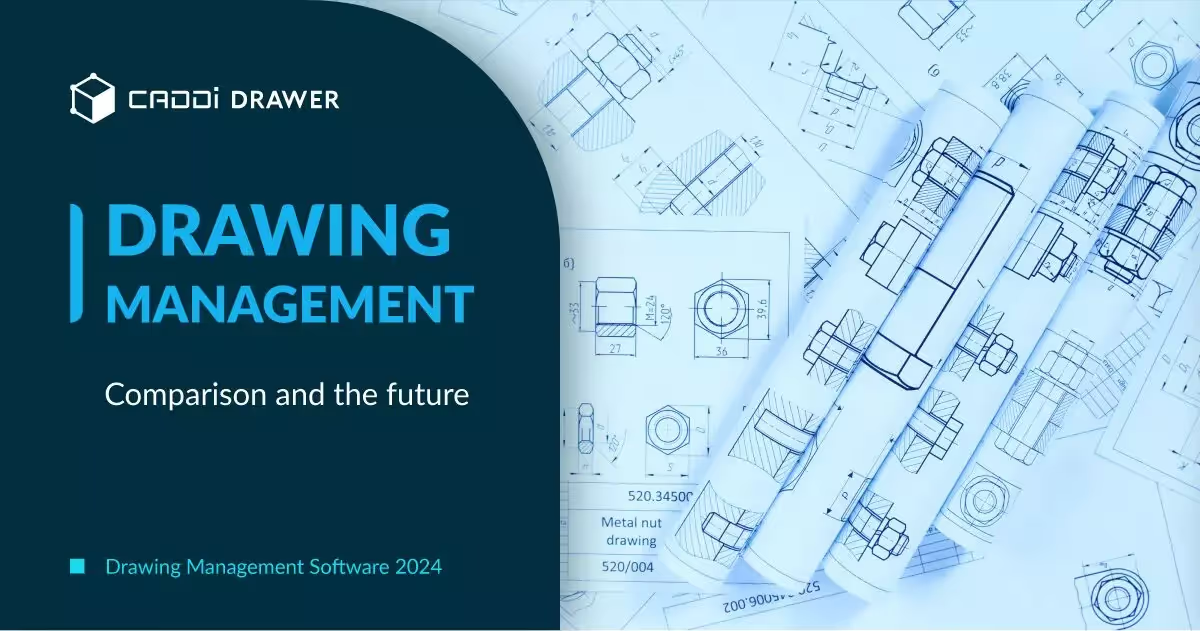

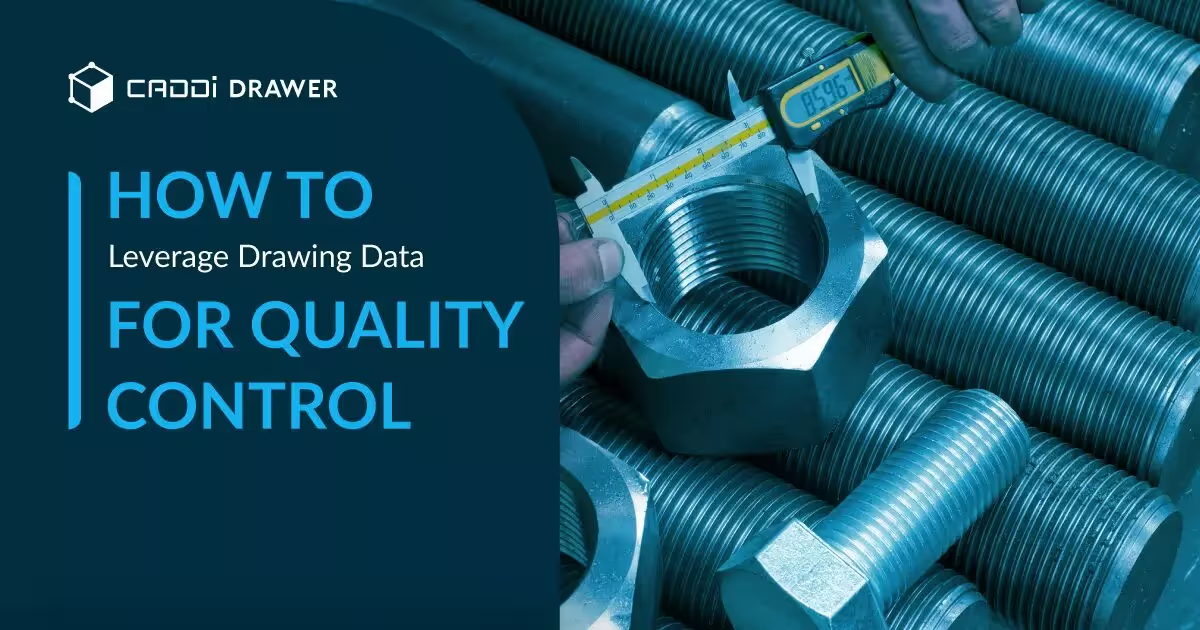



.svg)



.svg)
.svg)
.svg)


